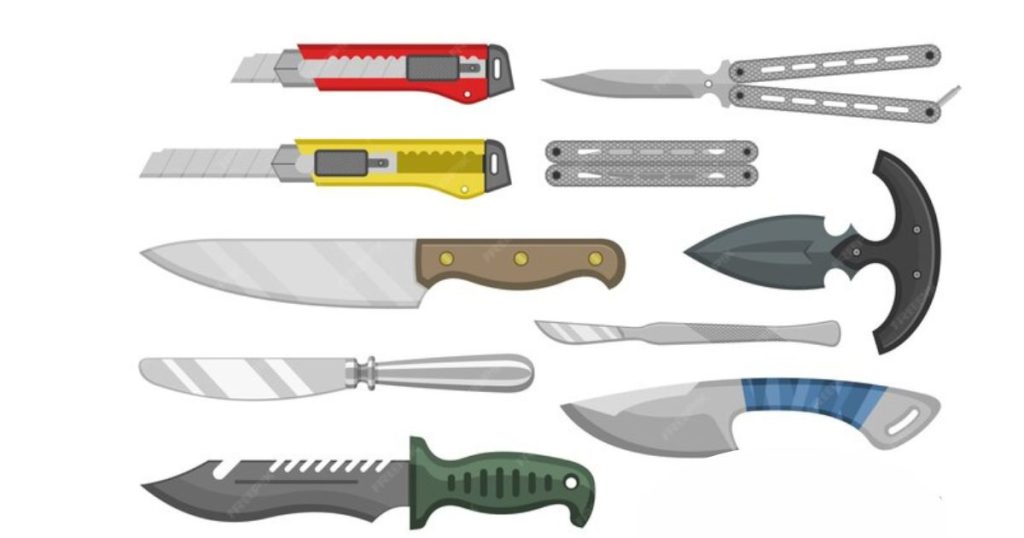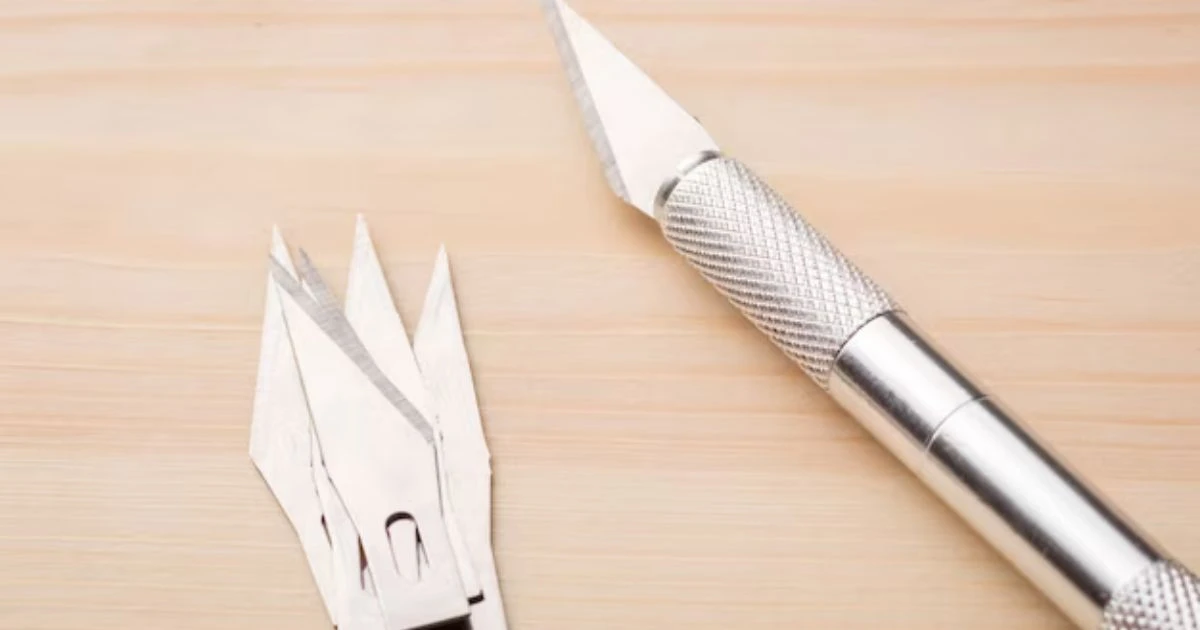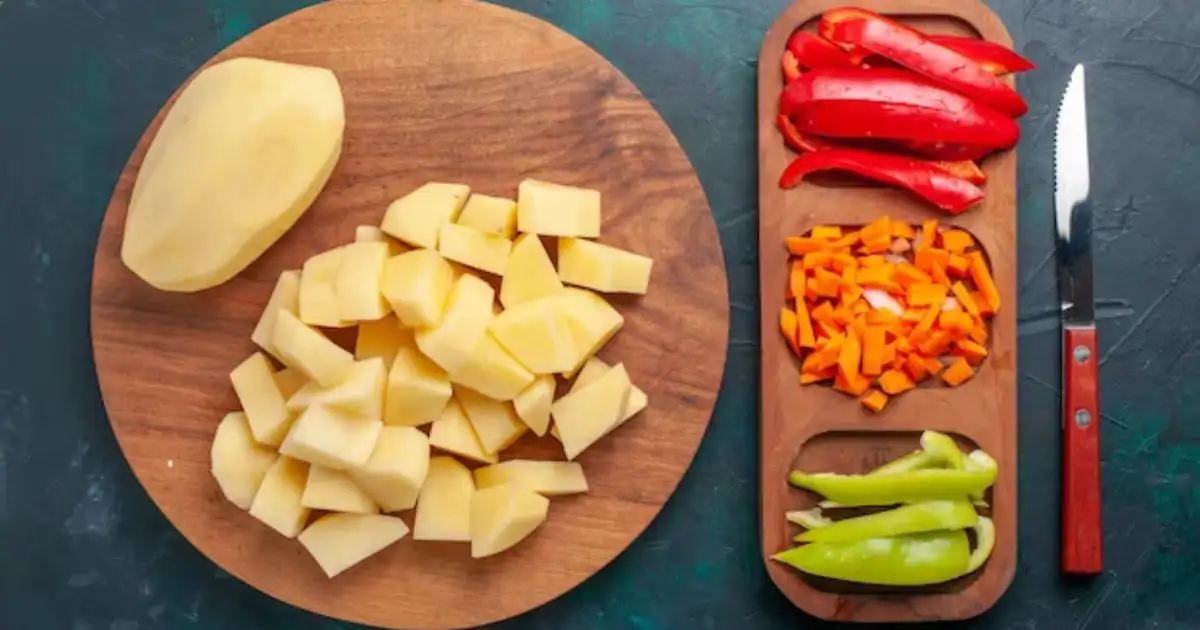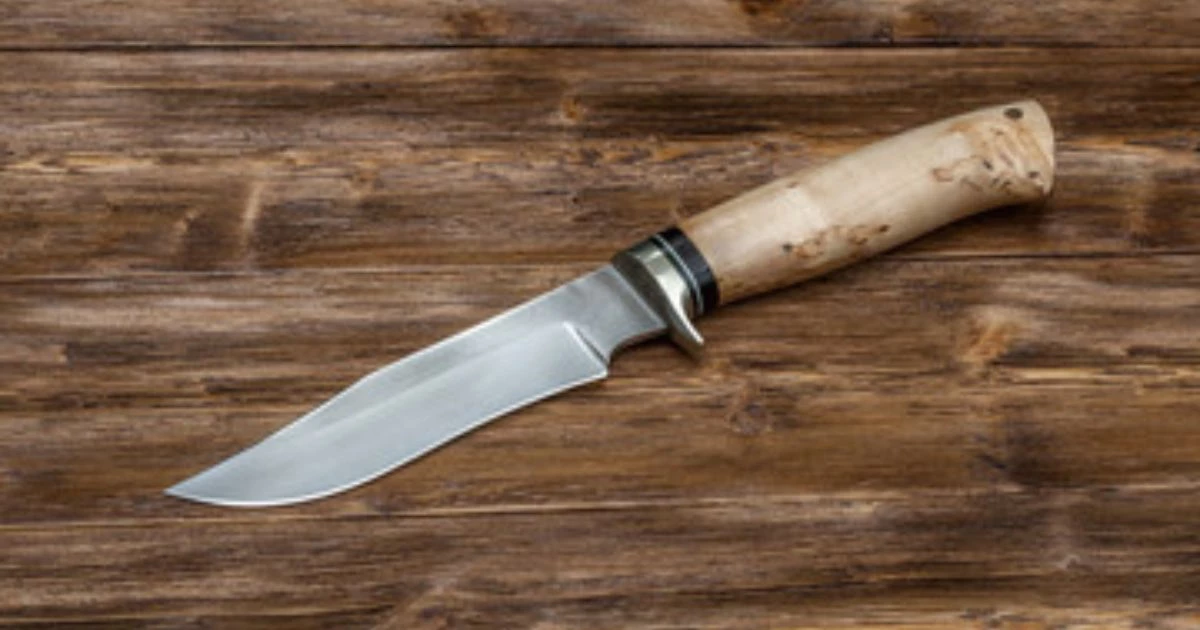Exacto knife Precision: Elevate Your Baking with Bread Scoring
Table of Contents
ToggleIntroduction
Bread baking is both an art and a science, and every baker knows that achieving the perfect loaf goes beyond just mixing ingredients. One crucial element that contributes to the texture, appearance, and overall success of a loaf is the technique of scoring.
Traditionally, bakers have relied on tools like lames and razor blades for this purpose, but in the world of creative experimentation, the humble Exacto knife has found its way into the hands of many bakers.
In this exploration, we delve into the realm of bread scoring and ask the question: Can an Exacto knife enhance your baking experience? Join us as we unravel the intricacies of scoring, explore the benefits of using an Exacto knife, and provide insights into making your bread-baking journey a precise and rewarding one.
What is the purpose of scoring in the baking process?
- Proper scoring in bread baking holds a dual significance, contributing significantly to both the oven spring—the final burst of fermentation during baking—and the aesthetics of the finished loaf.
Oven Spring:
- a. Controlled Expansion: Scoring plays a pivotal role in guiding the expansion of the dough during oven spring. As the bread is exposed to heat, gases trapped within the dough rapidly expand, causing the bread to rise. Without proper scoring, the expanding gases might push against the dough in unpredictable ways, leading to irregular cracks and a misshapen loaf.
- b. Prevention of Bursting: By creating deliberate cuts on the surface, bakers can release tension within the dough. This prevents the dough from tearing apart at weak points and promotes an even rise. The controlled release of gases through the scored sections ensures that the bread achieves the desired shape, whether it’s a classic round boule or an elongated baguette.
Aesthetics:
- a. Artistic Expression: Scoring is a canvas for bakers to express their creativity and artistry. The patterns and designs created during scoring not only enhance the visual appeal of the bread but also communicate the type of bread and the baker’s skill level. Intricate patterns, such as the ear on a sourdough boule, add a touch of sophistication to the loaf.
- b. Identification of Bread Type: Different scoring patterns are associated with specific types of bread. For instance, a cross pattern on a boule signifies a classic white bread, while a wheat sheaf pattern might indicate a whole wheat loaf. Proper scoring helps consumers visually distinguish between various bread types.
- c. Crust Texture: The cuts made during scoring influence the development of the crust. A well-scored loaf allows for controlled expansion, which contributes to the formation of a thin, crisp crust. The visual appeal of a perfectly browned and scored crust is an integral part of the overall attractiveness of the bread.
What are the benefits of using an exacto knife for scoring?
- Certainly! The benefits of using an Exacto knife for scoring bread are multifaceted and can significantly enhance a baker’s experience. Precision and Control:
- a. Fine Detailing: Exacto knives, known for their precision, allow bakers to achieve fine detailing and intricate scoring patterns on the bread’s surface. This level of control is especially beneficial when aiming for specific designs or when working with more delicate doughs.
- b. Consistent Depth: The adjustable blade depth of an Exacto knife enables bakers to maintain a consistent scoring depth across the entire loaf. This consistency ensures even expansion during baking, contributing to a uniform crumb structure.
Accessibility and Availability:
- a. Widespread Availability: Exacto knives are readily available in most craft stores, making them easily accessible to home bakers. The affordability and commonality of Exacto knives make them a practical choice for those who may not have access to specialized bread-scoring tools.
- b. Multi-purpose Use: Beyond scoring bread, Exacto knives have various applications in crafting and other activities. This versatility makes them a handy tool for those who appreciate tools with multiple uses.
Cost-Effectiveness:
- a. Affordable Option: Compared to some specialized bread lames or scoring tools, Exacto knives are often more budget-friendly. This makes them an attractive choice for home bakers or those who are just starting their bread-making journey without wanting to invest in specific baking tools.
Adaptability to Preferences:
a. Blade Variations: Exacto knives come with various blade types and materials, allowing bakers to choose a blade that suits their preferences. Whether a baker prefers a sharper blade for clean cuts or a slightly blunter one for a rustic appearance, the adaptability of Exacto knives caters to individual preferences.
- b. Handle Comfort: The ergonomic design of many Exacto knife handles ensures comfortable grip and control during the scoring process. This adaptability to different hand sizes and preferences contributes to a more enjoyable baking experience.
What are the different types of Exacto knives?

Classic Exacto Knife:
- Description: The classic Exacto knife typically features a slim metal handle with a removable and replaceable pointed blade.
- Use Case: It’s versatile and suitable for a wide range of applications, including scoring bread, paper cutting, and detailed crafting.
Swivel Exacto Knife:
- Description: Swivel Exacto knives have a blade that can rotate or swivel, providing additional manoeuvrability. This feature is particularly useful for intricate cuts and curved designs.
- Use Case: Well-suited for tasks that require flexibility and precision, such as creating circular patterns or intricate shapes.
Heavy-Duty Exacto Knife:
- Description: Built with a sturdier and more robust construction, heavy-duty Exacto knives are designed for tasks that require more cutting force or durability.
- Use Case: Ideal for cutting through thicker materials or tough surfaces, making them suitable for certain crafting projects or DIY tasks.
Precision Exacto Knife Set:
- Description: Precision sets often include a variety of handle types and blade shapes, allowing users to interchange them based on their specific needs. These sets may also come with additional accessories and storage options.
- Use Case: Perfect for users who require a range of blade options for different applications, providing flexibility in tackling various projects.
Graphic Arts Exacto Knife:
- Description: Designed with graphic artists in mind, these knives often have a comfortable grip and may come with specialized blades suitable for detailed design work.
- Use Case: Ideal for artists, illustrators, or anyone involved in graphic design where precision and control are paramount.
How do I select an Exacto knife for scoring bread?
Blade Type:
- Sharpness: Look for a blade that is sharp and maintains its edge well. A sharp blade is essential for clean cuts without tearing the dough.
- Material: Consider blades made from high-quality materials like stainless steel, which resists corrosion and maintains sharpness.
Blade Length:
- Appropriateness for Scoring: Opt for a blade length that suits the size of the loaves you typically bake. A longer blade may be more suitable for larger loaves, while a shorter one might work well for smaller breads.
Handle Design:
Ergonomics: Choose a knife with an ergonomic handle design that provides a comfortable grip. This is crucial for maintaining control and precision during the scoring process.
Material: Handles are often made from materials like plastic, metal, or rubber. Consider the material that feels most comfortable in your hand and provides a secure grip, especially if your hands might be flour-covered during baking.
Handle Length:
Balance: The length of the handle contributes to the overall balance of the knife. A well-balanced knife ensures better control and reduces the strain on your hand and wrist.
Retractable Blade:
- Safety: A retractable blade adds an extra layer of safety by allowing you to retract the blade when not in use. This feature minimizes the risk of accidents during handling and storage.
Replaceable Blades:
- Convenience: Consider knives with replaceable blades. This allows you to easily switch out dull blades for sharp ones, ensuring consistent performance over time.
Adjustable Blade Depth:
- Versatility: Some Exacto knives come with an adjustable blade depth, allowing you to control how deep the blade cuts into the dough. This feature is beneficial for achieving different scoring depths for various types of bread.
Budget:
- Affordability: Exacto knives come in a range of price points. Determine your budget and find a knife that offers good value for the features you need.
Safety Features:
- Safety Locks: Ensure the knife has a reliable safety lock mechanism to prevent accidental blade exposure when not in use.
- Grip Stability: Look for features that enhance grip stability, such as textured handles or rubberized grips.
How can we score bread with an Exacto knife?
- Scoring bread with an Exacto knife requires attention to detail and a steady hand. Here are some tips to ensure successful and precise scoring:
Preparation of Dough:
- Proper Proofing: Ensure that your dough is appropriately proofed. Underproofed or over-proofed dough can affect the scoring process and the final appearance of the bread.
- Smooth Surface: Aim for a smooth surface on the dough. This can be achieved by gently shaping and tightening the dough during the pre-shaping and shaping stages.
Exacto Knife Preparation:
- Sharp Blade: Ensure the Exacto knife blade is sharp. A dull blade can lead to tearing instead of clean cuts.
- Clean Blade: Before scoring, make sure the blade is clean of any dough residue. This helps in achieving smoother cuts.
Technique for Holding the Knife:
- Firm Grip: Hold the Exacto knife with a firm but not overly tight grip. This provides stability and control during the scoring process.
- Angled Approach: Hold the knife at a slight angle to the surface of the dough. This helps the blade cut through the dough more effectively.
Scoring Patterns:
Practice Basic Patterns: If you’re new to scoring, start with basic patterns like a single straight cut or a simple cross. As you gain confidence, you can experiment with more intricate designs.
Match the Bread Type: Different bread types may require specific scoring patterns. Research and choose patterns that complement the characteristics of the bread you are baking.
Scoring Depth:
- Consistent Depth: Aim for consistent scoring depth. Too shallow cuts may result in limited oven spring, while cuts that are too deep can deflate the dough.
- Adjustable Blades: If your Exacto knife has an adjustable blade depth, consider experimenting with different settings to find the optimal depth for your bread.
Timing of scoring:
- Just Before Baking: Score the dough just before placing it in the preheated oven. This ensures that the cuts are open and ready to expand during the initial stages of baking.
Flour or water for the blade:
- Flour or Water: Consider lightly flouring or wetting the blade before scoring. This can help the blade glide smoothly over the dough, preventing sticking.
Practice on scrap dough:
Test Scoring: Before scoring your actual loaves, practice on a piece of scrap dough. This allows you to get a feel for the knife and refine your technique.
What are the potential challenges and solutions?
While using an Exacto knife for scoring bread offers many advantages, certain challenges may arise. Here are potential challenges and corresponding solutions to help navigate them effectively:
Uneven Scoring:
- Challenge: Achieving consistent and even scores can be challenging, leading to uneven expansion during baking.
- Solution: Focus on maintaining a steady hand and applying consistent pressure. Practice your scoring technique on scrap dough to improve precision. Consider using a ruler or scoring guide to create straight and evenly-spaced cuts.
Safety Concerns and Precautions:
- Challenge: Exacto knives have sharp blades, posing a risk of injury during use.
- Solution: Prioritize safety by always retracting the blade when not in use. Use a cutting mat to protect surfaces, and be mindful of your hand placement to avoid accidental cuts. Consider using a knife with a safety lock mechanism for added protection.
Difficulty in Achieving Intricate Designs:
- Challenge: Creating intricate scoring patterns may be challenging for beginners or when using a basic Exacto knife.
- Solution: Start with simpler patterns and gradually progress to more complex designs as your skill improves. Consider using swivel Exacto knives or knives with interchangeable blades to enhance versatility for intricate detailing.
Inconsistent Blade Depth:
Challenge: Achieving a consistent scoring depth can be difficult, leading to uneven oven springs.
Solution: If your Exacto knife has an adjustable blade depth, experiment with different settings to find the optimal depth for your bread. Pay attention to the angle at which you hold the knife to ensure uniform scoring depth.
Handling sticky dough:
- Challenge: Sticky or high-hydration dough may cause the blade to drag or stick during scoring.
- Solution: Lightly flour the blade before scoring to reduce sticking. Wetting the blade slightly can also help if the dough is exceptionally sticky. Adjust the flour or water based on the dough’s hydration level.
Limited Comfort and Ergonomics:
- Challenge: Some Exacto knives may lack ergonomic designs, causing discomfort during prolonged use.
- Solution: Choose an Exacto knife with an ergonomic handle or grip to enhance comfort. Consider models with rubberized grips or handles designed to minimize hand fatigue.
Lack of Versatility:
- Challenge: Some bakers may find Exacto knives limiting in terms of the variety of scoring patterns they can achieve.
- Solution: Experiment with different blade shapes and sizes. Consider investing in a precision Exacto knife set that offers a range of blades for diverse scoring options.
Real-Life Experiences: Bakers Who Use Exacto Knives
- Incorporating real-life experiences from bakers who have successfully used Exacto knives for scoring bread provides valuable insights into the practical application of this tool. Let’s explore a few anecdotes:
Precision in Artisan Baking:
- Baker Profile: Emily is an artisan baker known for her intricately scored sourdough loaves.
- Experience: Emily appreciates the precision that an Exacto knife brings to her scoring process. The fine point of the blade allows her to create detailed patterns, contributing to the aesthetic appeal of her artisanal bread. She notes that the Exacto knife’s versatility enhances her ability to experiment with various scoring techniques, bringing a personal touch to each loaf.
Accessibility for Home Bakers:
- Baker Profile: Alex is a home baker with a passion for bread-making.
- Experience: Alex, who initially started baking bread as a hobby, found the Exacto knife to be a convenient and accessible tool. Living in an area without easy access to specialized bread lames, Alex discovered that the Exacto knife, readily available at local craft stores, served as a reliable alternative. The affordability and multi-purpose use of the knife made it an ideal choice for someone starting their baking journey at home.
Ease of Blade Replacement:
- Baker Profile: Sarah, is a professional baker with a focus on efficiency.
- Experience: Sarah, working in a busy bakery environment, values the ease of blade replacement that an Exacto knife provides. The ability to quickly swap out blades ensures that she maintains a consistently sharp edge for precise scoring. This feature has become a time-saving aspect of her daily bread production routine, allowing her to achieve consistent results with minimal downtime.
Adaptability for Specialty Breads:
- Baker Profile: Miguel is a baker specializing in unique bread varieties.
- Experience: Miguel, known for his diverse range of bread creations, highlights the adaptability of the Exacto knife for scoring various speciality bread. Whether crafting intricate patterns on enriched doughs or achieving clean cuts on high-hydration ciabatta, Miguel appreciates how the Exacto knife’s versatility allows him to meet the specific demands of each type of bread in his bakery.
Teaching Tool for Baking Classes:
- Baker Profile: Rachel is a baking instructor focusing on artisanal techniques.
- Experience: Rachel, who teaches a variety of baking classes, finds the Exacto knife to be an excellent teaching tool. Its simplicity and widespread availability make it an accessible choice for her students. Rachel observes that beginners often appreciate the control and precision that the Exacto knife offers, allowing them to build confidence in their scoring skills before exploring other specialized tools.
Conclusion
In conclusion, the use of an Exacto knife for scoring bread emerges as a versatile and accessible tool that bridges the gap between precision and practicality in the art of bread baking. Through the real-life experiences of bakers, we witness the knife’s adaptability for both artisanal detailing and the everyday needs of home and professional bakers alike.
Its precision allows for intricate patterns, while its widespread availability makes it a reliable choice, especially for those venturing into bread baking without access to specialized tools. The ease of blade replacement and the knife’s adaptability for various bread types further contribute to its appeal.
As we navigate the world of bread scoring, the Exacto knife stands out as a valuable ally, offering a blend of functionality, affordability, and the potential for creative expression in the hands of bakers of all skill levels. Whether crafting artisan loaves, teaching baking classes, or exploring the diverse realm of specialty bread, the Exacto knife proves to be more than just a cutting tool—it becomes an integral part of the baker’s toolkit, enhancing the beauty and precision of every scored loaf.
FAQS
Can I use any Exacto knife for scoring bread, or are there specific models designed for baking purposes?
- While many bakers successfully use standard Exacto knives for scoring, there are specialized bread lames and scoring tools available. These tools often feature designs tailored to the unique demands of bread scoring. However, an Exacto knife with a sharp blade and a suitable handle design can still be a practical alternative.
Are there safety concerns associated with using an Exacto knife for scoring bread, and how can I ensure safe usage?
- Safety is a priority when using any sharp tool. Ensure that the blade is securely retracted when not in use, and handle the knife with care to prevent accidents.
Do I need to flour or wet the blade of the Exacto knife before scoring dough, and how does this affect the process?
- Flouring or wetting the blade can help prevent it from sticking to the dough. Depending on the hydration level of your dough, lightly flouring the blade or wetting it can contribute to smoother cuts. Experiment with both methods to find what works best for the specific characteristics of your dough.
Can I achieve the same scoring precision with an Exacto knife as with a traditional lame or razor blade?
- While traditional scoring tools like lames are specifically designed for bread baking, many bakers have successfully achieved precision with Exacto knives. The key lies in maintaining a sharp blade, using proper technique, and practising regularly. Advanced Exacto knife models with adjustable blade depths can provide versatility and enhance precision.
Is an Exacto knife a cost-effective option for scoring bread, especially for someone new to baking?
- Yes, Exacto knives are generally affordable and widely available at craft stores. For someone new to baking or experimenting with scoring techniques, an Exacto knife can be a cost-effective entry point. As your skills and preferences develop, you can explore specialized scoring tools if desired.




